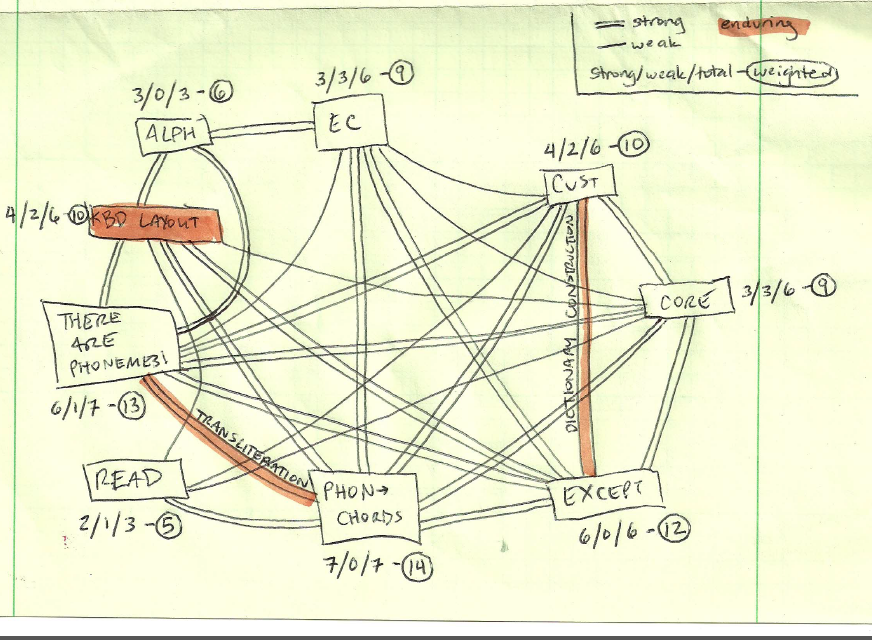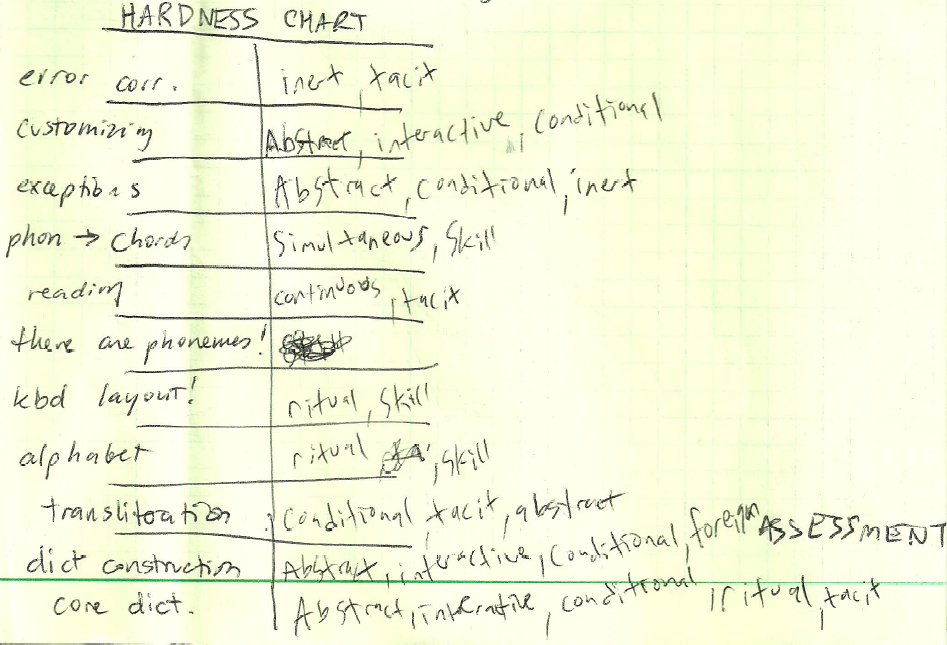Applying pedagogical skillz to FOSS projects: Plover case study
When I was in New York at the end of April, Mirabai and I sat down and hacked through a lot of pedagogy thinking for plover, an open source steno software project. We made a concept map to see how various skills were connected and a list of what, exactly, made certain skills difficult to learn.
I'm posting this with curiosity about two things:
- How understandable are these notes to someone who wasn't part of the conversation (in the basement of a little tea shop with fantastic panini)?
- From what you can see here, would any of this sort of thinking/work/process be useful to other FOSS (or open content/hardware/Free Culture) projects with an educational component -- whether that's new developer outreach, "students" as a user group for the software product, a software product that's specialized and/or difficult to learn, or anything else?
- EC - error correction (delete, backspace, arrow keys, etc)
- CUST - customizing your own dictionary
- CORE - using a basic "core" dictionary (the one that comes pre-loaded with Plover)
- EXCEPT - dealing with exceptions to phonetic rules
- PHON->CHORDS - mapping phonemes (auditory) to chords (on the keyboard)
- READ - reading steno shorthand (being able to look at a brief for a word, immediately chord that word on your own keyboard, and have a good guess as to what that word might be in English)
- THERE ARE PHONEMES! - breaking down words into phonemes instead of letters
- KeyBoarD LAYOUT - what keys on the qwerty (sidewinder) keyboard map to what letters on the steno keyboard; mostly building muscle memory.
- ALPHabet - the ability to type individual letters on the steno keyboard (vital at the start when you don't know the briefs for many words).
The numbers by each box (for instance, 3/3/6 (9) right above the "EC" block) are totals for strong links, weak links, total links, and a weighted sum (2*strong + 1*weak) for each concept. This is to help us see which concepts are the most centrally connected, which is sometimes surprising - for instance, I didn't expect "READing stenographic shorthand" to be almost half as "important" (by number of connections) than being able to use the delete key! (in "Error Correction")
The orange highlights were things we tagged as "enduring understanding" -- if you study steno and only remember three things, the most important ones to remember are...
- Dictionary construction - the connection between EXCEPT(ions to the phonetic system) and CUST(omizing your own dictionary)
- Transliteration - the connection between THERE ARE PHONEMES! and mapping PHONemes-to-CHORDS.
- KeyBoarD LAYOUT - skill as described above.

